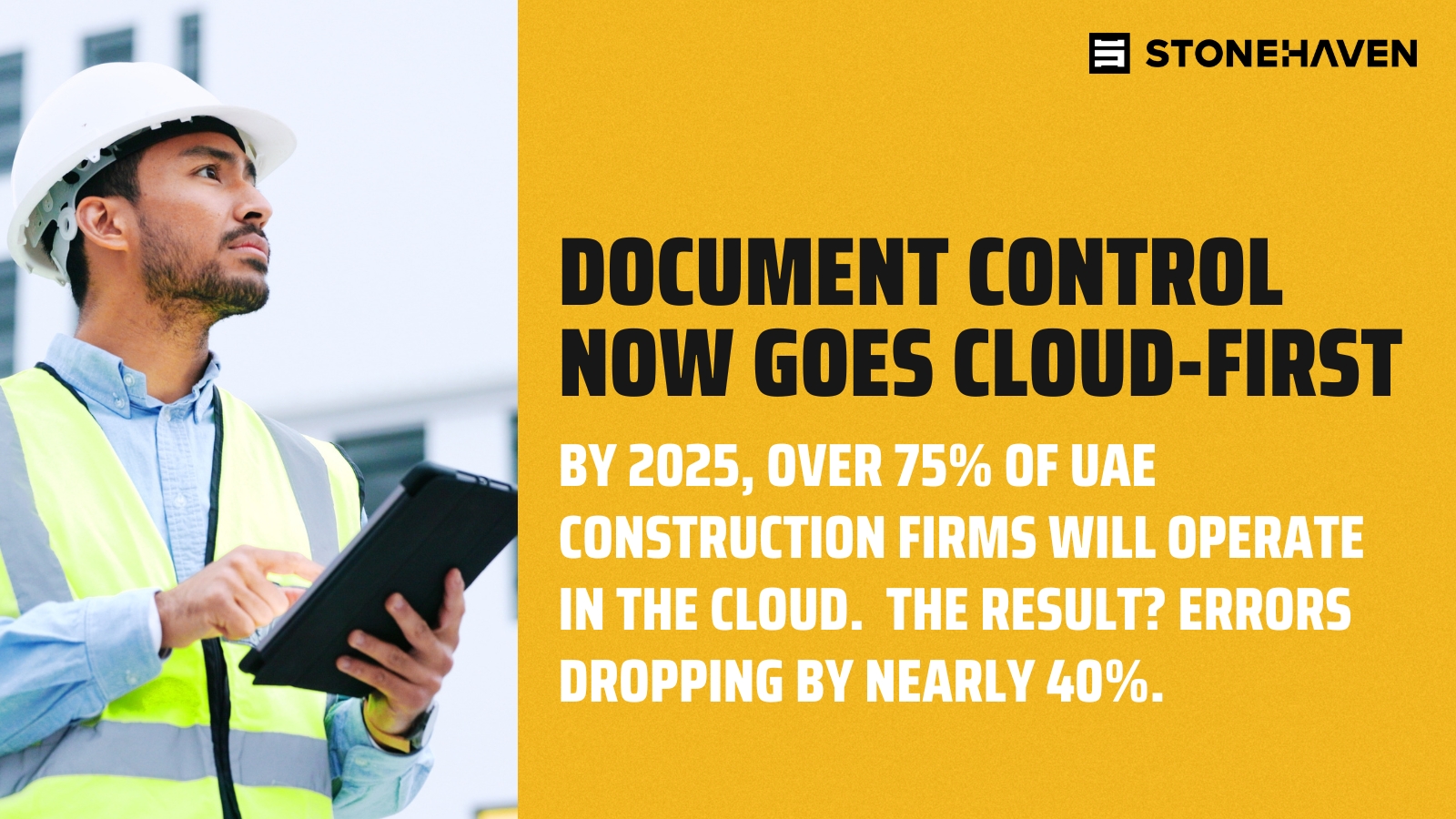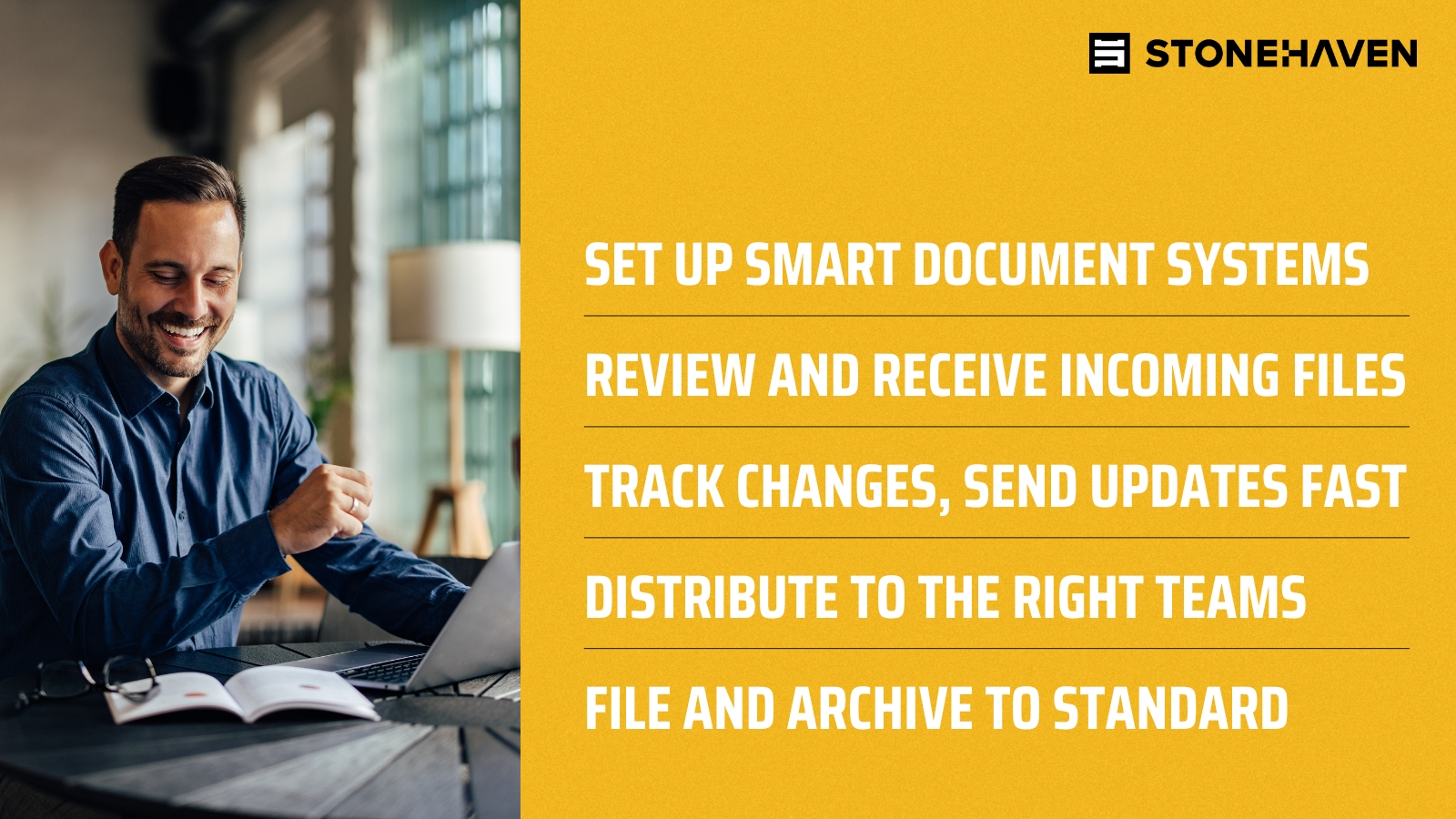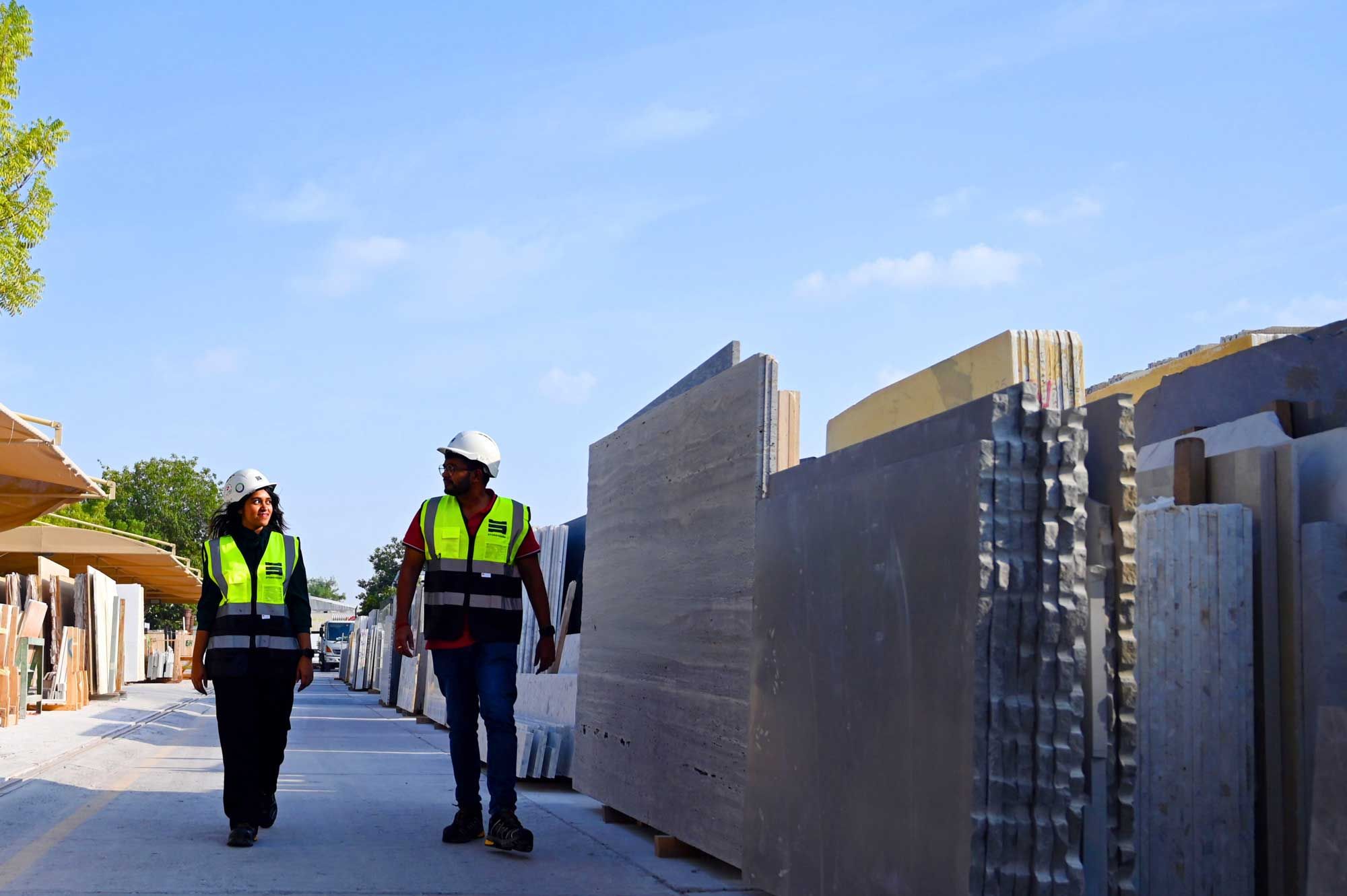In the construction industry, where millions of dollars and countless hours hinge on precision, document control is no longer a luxury, it's a necessity. From design drawings to safety procedures, every document holds the power to either accelerate progress or bring a project to a grinding halt. As construction projects grow in complexity, so does the need for robust, streamlined document control systems that ensure the right people get the right information at the right time.
Without effective document control, even the most well-funded projects can suffer delays, cost overruns, or legal disputes. A misplaced permit, an outdated drawing, or a missed revision can have ripple effects across an entire site. That’s why document control in construction is gaining strategic importance, not just for compliance, but for productivity, collaboration, and quality assurance.
More than a back-office function, document control is central to modern construction project management. It serves as the connective tissue between teams, software platforms, and timelines. By maintaining a single source of truth across the project lifecycle, document control enhances transparency, mitigates risk, and ensures accountability.
This blog explores the role of document control in construction through the lens of project management. We’ll break down its definition, its alignment with project workflows, the evolving job role of document controllers, and the rise of powerful document management systems (DMS). Whether you're a project manager, contractor, or stakeholder, understanding the mechanics of document control could be your edge in delivering better, faster, and more compliant builds.
What is Document Control in Construction?
Document control in construction refers to the process of managing all project-related documents to ensure they are accurate, accessible, and up to date. This includes tracking revisions, ensuring proper approvals, and maintaining version histories across the project lifecycle. From architectural blueprints and technical drawings to contracts, RFIs (Requests for Information), and health & safety logs, the volume and variety of documents can be immense.
What makes construction document control unique is its high-stakes nature. A single outdated document can lead to expensive rework, safety issues, or disputes. For instance, if a subcontractor receives an older version of a design drawing, they may install systems incorrectly, triggering delays and financial loss. Document controllers ensure this doesn't happen.

The process typically involves:
● Receiving and indexing incoming documents
● Reviewing for accuracy and formatting
● Distributing to relevant parties
● Tracking changes and maintaining revision control
● Archiving completed documentation
Types of document control in construction include manual systems (paper-based logs, spreadsheets), semi-digital tools (shared drives, basic software), and full-scale DMS platforms integrated with project management software.
In the UAE market, tech adoption is rapidly transforming how document control is performed. By 2025, an estimated 75% of UAE construction firms will rely on cloud-based platforms, significantly reducing documentation errors by nearly 40%. Additionally, around 60% of construction firms are actively embedding digital workflows, including AI-powered approval systems and BIM-enabled design collaboration, into their operations.
This digital shift aligns with broader global trends: the construction management software market is projected to be worth USD 10.64 billion in 2025, with forecasts indicating growth to USD 16.62 billion by 2030, expanding at a 9.33% CAGR. This surge reflects increasing reliance on software for integrated project delivery, compliance tracking, and smart documentation systems.
The purpose of document control extends beyond basic filing. It contributes directly to project governance, quality assurance, and risk management. Well-structured document control also supports audit readiness, contract compliance, and smooth handovers.
In today’s digital age, the role of document control is expanding. With cloud-based platforms and AI-assisted workflows, construction teams can automate much of the document lifecycle, reduce human error, and improve collaboration across multiple stakeholders.
Is Document Control a Part of Construction Project Management?
Document control is not just a supporting function, it's integral to modern construction project management. Every stage of the project lifecycle, from concept to closeout, is document-heavy and dependent on timely access to accurate information. Project managers rely on document control to coordinate teams, track progress, and meet regulatory and contractual obligations.
In traditional project management frameworks, document control is aligned with communication, scope management, quality assurance, and risk reduction. It supports:
● Design coordination (ensuring all disciplines work off the same plans)
● Procurement (RFQs, contracts, BOQs)
● Scheduling (milestone approvals, site instructions)
● Compliance (permits, safety certifications)
● Cost management (variation orders, invoicing backups)
Consider a construction project without proper document control: teams working with conflicting information, delays in submittals, and disputes over responsibilities. Now consider the opposite: a structured system where every stakeholder has real-time access to the latest documents via a project management platform. The latter boosts productivity, reduces miscommunication, and accelerates delivery.
Leading construction project management software now includes built-in document control modules or integrates with best-in-class DMS tools. This creates a seamless environment for tracking approvals, collaborating on designs, and automating workflows.
Project managers also benefit from transparency. Version tracking, access logs, and audit trails offer insight into who made what change and when, critical in case of disputes or claims. It ensures accountability across consultants, contractors, and suppliers.
In Design & Build or EPC (Engineering, Procurement, and Construction) contracts, document control is often the unsung hero behind fast-tracked timelines. It enables lean decision-making, reduces rework, and keeps large teams aligned. This is why document control procedures are increasingly baked into construction project management plans from day one.
What is the Role of a Document Controller in Construction?
A document controller in construction is responsible for managing, distributing, and safeguarding all project-related documentation. Think of them as the air traffic controllers of information, coordinating the flow of documents so nothing gets lost, delayed, or miscommunicated.

Their daily responsibilities include:
● Setting up document control systems and protocols
● Receiving and reviewing incoming documents
● Tracking revisions and issuing updates
● Ensuring timely distribution to relevant stakeholders
● Filing and archiving per regulatory and contractual standards
The document control job description in construction may vary depending on project size. On smaller sites, it might be a part-time role handled by a site admin. On mega-projects, it’s a full-time position involving coordination with design consultants, contractors, subcontractors, and clients.
Good document controllers are experts in construction terminology, familiar with drawing naming conventions, and skilled in digital platforms like Aconex, Procore, or RIB iTWO. They often work closely with quality assurance teams to ensure all documentation is compliant with ISO standards or contractual deliverables.
But it’s not just an admin job. Document controllers are gatekeepers of information integrity. They flag inconsistencies, ensure distribution lists are updated, and often manage permissions and user access levels on document platforms.
Their work has tangible impact:
● Reduces costly errors from miscommunication
● Accelerates approvals and submittals
● Ensures regulatory compliance
● Improves dispute resolution with accurate document trails
As construction adopts more digital tools, the role is evolving. Document controllers now need hybrid skills, part administrator, part software specialist, part communicator.
What is DMS in Construction?
DMS stands for Document Management System. In construction, a DMS is a digital platform designed to manage the entire lifecycle of documents, from creation and collaboration to approval and archiving. Unlike generic cloud storage, a DMS is tailored to meet the highly specific needs of construction workflows. It offers controlled access levels, allowing only authorised stakeholders to view or edit particular documents. Automatic version tracking ensures that teams are always working from the latest approved files, avoiding the chaos of conflicting or outdated information. Custom metadata tagging, such as project ID, discipline, and submission date, enables quick organisation and retrieval.
Modern DMS platforms also automate workflows, routing documents to the right people for review and approval. This reduces manual oversight, speeds up decision-making, and minimises the risk of delays. Integrated markup tools allow engineers, architects, and consultants to comment directly on drawings and specifications, supporting clear and efficient collaboration.
Several top-tier document management systems are used widely across the industry. Aconex is commonly deployed in large-scale infrastructure projects due to its robust control features and global access capabilities. Procore is favoured by general contractors and subcontractors for its all-in-one project management integration. Autodesk Construction Cloud is a popular choice for teams already using design software like Revit and AutoCAD. RIB iTWO is noted for integrating document control with 5D project planning, combining cost and time dimensions. Bluebeam Revu, meanwhile, excels in PDF markup and review, making it ideal for drawing-intensive workflows.
These platforms enhance collaboration across all stakeholders. Engineers can digitally redline plans, project managers can monitor submittal schedules, and contractors can verify specs from the field,all without relying on printed paperwork. A well-implemented DMS reduces duplication, improves accountability, and ensures secure, searchable archives that support compliance and audit-readiness.
As an embedded component of construction project management software, DMS tools ensure alignment across planning, design, procurement, and on-site execution. In an industry where timing, traceability, and clarity are everything, a strong DMS isn’t just an efficiency tool, it’s a safeguard for quality, cost control, and stakeholder confidence.
What are the Skills of a Document Controller in Construction?
To excel as a document controller in construction, both technical and interpersonal skills are essential. It’s a role that sits at the intersection of communication, organisation, and compliance, requiring precision, agility, and an ability to bridge teams across disciplines.
Technically, document controllers must be proficient in leading document control platforms. They need to understand a range of file formats, including .dwg, .pdf, .xls, and .rvt, and be comfortable navigating through digital drawings and specifications. Familiarity with the different phases of construction, common terminology, and the ability to interpret design intent are also crucial. In addition, a sound understanding of quality control processes and ISO standards is expected, along with strong command of Excel functions and metadata tagging for proper indexing.
On the interpersonal side, successful document controllers demonstrate exceptional attention to detail and communicate clearly with diverse project stakeholders. They are adept at coordinating across departments, ensuring timely reviews and approvals, and juggling competing priorities without compromising accuracy. Being deadline-driven, they must manage workloads under pressure, resolve conflicts diplomatically, and anticipate potential roadblocks before they escalate.
These combined capabilities make document controllers invaluable, especially on large-scale or high-stakes projects. Many professionals in this role eventually grow into project coordination or quality assurance positions, reflecting the natural overlap of skill sets. For those looking to advance, certifications such as EDMS (Electronic Document Management Specialist), ISO 9001 Internal Auditor, or PMP (Project Management Professional) can provide added credibility and upward mobility.
Given how document-heavy construction projects are, the ability to manage, track, and communicate around documents with efficiency and accuracy directly affects project performance. A skilled document controller doesn't just manage information, they manage risk, relationships, and reliability.
What Construction Document Management Software Do Document Controllers Use?
Construction document controllers rely on a suite of digital tools to manage project documentation. These platforms go far beyond simple file storage, they serve as collaborative ecosystems that connect design teams, contractors, consultants, and clients in real time.

Among the most widely used systems is Aconex, valued for its robust audit trails, transmittal management, and integration with field apps, making it particularly useful for infrastructure and large-scale developments. Procore is another leader, popular for its seamless integration of document control with RFIs, change orders, and punch lists, features that make it a go-to for general contractors and subcontractors.
Autodesk Construction Cloud is ideal for design-build workflows, especially when teams are already using Revit or AutoCAD. RIB iTWO, on the other hand, stands out for combining document management with 5D BIM capabilities, bringing time and cost dimensions into a unified platform.
In addition to these core platforms, many document controllers also use supplementary tools. SharePoint and Google Workspace are commonly used for internal documentation and team collaboration. Bluebeam Revu is often deployed for detailed drawing markups and design reviews, while Newforma provides specialised control for architectural and design-focused environments.
The choice of software often depends on several factors: the scale and complexity of the project, the number of stakeholders involved, the need for on-site mobile access, and whether integration with cost estimation or scheduling platforms is required.
At Stonehaven, we integrate DMS tools directly into our end-to-end project management workflows. Whether managing a hospital in Dubai, a residential tower in Doha, or an infrastructure upgrade in Durban, our teams always operate using the most current, accurate, and approved documents. This approach not only enhances coordination but ensures every stakeholder remains aligned, accountable, and audit-ready from design to delivery.
Conclusion
In construction, time is money, and information is everything. Document control transforms how projects are managed, reducing chaos and enhancing collaboration. As construction grows more digitised and interconnected, the role of document controllers and DMS tools will only become more vital.
From avoiding costly mistakes to accelerating project approvals, document control offers measurable benefits to stakeholders across the value chain. It empowers project managers, protects contractors, and ensures client satisfaction.
For forward-looking construction firms, investing in document control isn’t just about compliance, it’s about competitive advantage.
About us
Stonehaven is a trusted partner in end-to-end project management for the construction industry. With extensive experience managing large-scale projects across the Middle East, we understand how crucial precision and coordination are to delivering successful outcomes. Even minor communication breakdowns can lead to costly delays, errors, or compliance issues.
That’s why document control is central to every project we manage. From hospitals in Abu Dhabi to commercial towers in Dubai, we implement robust document management systems that provide real-time access to current, approved information. This ensures every stakeholder is aligned, informed, and working from the same page.
We use leading construction management software and industry best practices to streamline workflows, reduce errors, and meet regulatory requirements. Our clients include developers, architects, contractors, and public sector bodies who trust us for our detail-driven, technology-forward approach.
Let’s streamline your documentation process from day one. Contact us today for a tailored document control system built for project realities.

















